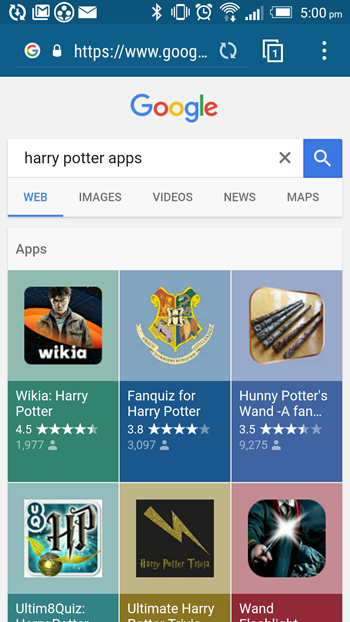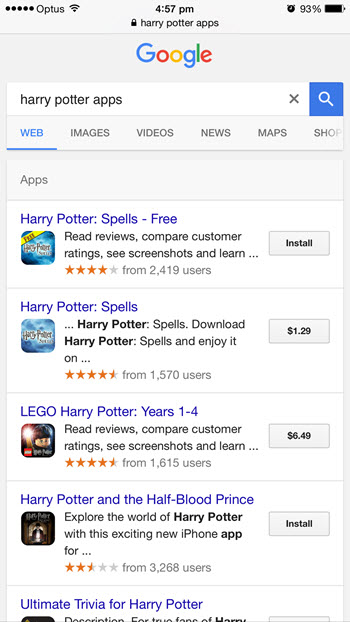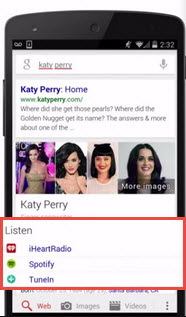Ever heard the phrase ‘there’s an app for that’? The dawn of a new age is upon us people. In this new age there is an app for this, that and everything! Apps have created a shift in user behaviour where users look to apps to satisfy their needs. Apps have also revolutionised businesses allowing them to cater to their users within an app. While app store optimisation (ASO) has been the main form of optimisation, there is now a new approach emerging that combines app store optimisation and traditional SEO.
So step aside for a second ASO. There’s a new kid on the block. Say hello to my little friend; app optimisation.
Why Should You Care?
Ah yes. Great question! It’s rather simple. App indexing and optimisation is the future of your SEO efforts, and it’s already present for mobile marketing. This does beg an interesting question; why would you implement SEO on your site, but not on your app? Much of this post will answer this question, whilst also delving into what it means to optimise your app.
Let me tell you a story. It all started with app-indexing. Now app-indexing is not new. In fact, Google has been indexing apps in its search results since October 2013. Google has now compiled over 30 billion links within apps indexed in its search engine. Bing has also jumped on the band wagon, and indexes app content in its search results as well. 
But before we get into that, you’ll need a greater understanding of app indexing and how it works. Then we can get into the nitty gritty of app optimisation.
What Is App-Indexing?
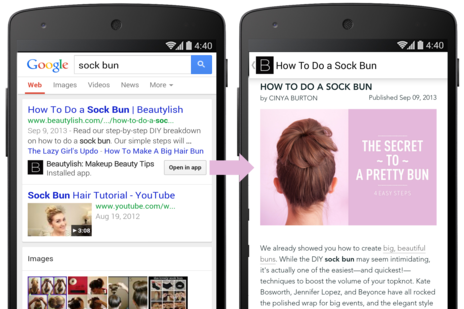
App-indexing allows search engines to index apps similar to that of websites, in its search results. App-indexing works by serving search results with the addition of app content through the deep linking of in-app content. These pages in your app work similar to landing pages, whereby a user will land on the relevant page to their search in your app.
Now, you’re probably thinking what if the user does not have my app installed? The answer is app discovery! When search engines index your app content in its search engine, and a user completes a search that returns your app’s content as a result, they will be prompted to download the app or open it on their smartphone, which as you know encourages re-engagement. I will discuss this in more detail later on in this post.
You now have a working understanding of app-indexing and how it works! So without further ado, here are the 5 things you need to know about app optimisation.
1. App Store Optimisation (ASO) Now Involves a Hybrid Approach

As I said, app store optimisation (ASO) has been the main form of app optimisation for some time. But now a new approach has emerged that involves combining app store optimisation and traditional SEO.
I know I said it was time for app store optimisation to step aside, but not completely. App optimisation involves a hybrid approach between app store optimisation and traditional SEO. Let’s start with app store optimisation. ASO involves both keywords and app performance. By keywords we mean where keywords are mentioned within the title, description and device/ platform. Optimising your app using the relevant keywords that represent your business, will ensure your app is found within the App Store by the users who are valuable to you.
Now, I mentioned that app performance was also involved in ASO. Google looks at the performance of the app itself to determine how to rank your app. Here are some of the factors involved:
- Number of ratings
- Ratings score
- Number of downloads/ app installations
- Engagement
- Internal links within the App Store
ASO also involves app performance optimisation. This can be done by increasing an apps average ratings number, number of ratings and number of app downloads.
It’s important to think of ASO as your chance to increase app store visibility, which ultimately translates to greater visibility in Google’s search results. Moz covers this in greater detail in their mobile app search post.
Another element of ASO involves web optimisation of an app itself, which consists of factors such as:
- Links to the app itself
- Social shares
- Linking from your website to your app for greater discoverability
Addressing all of these elements will ensure that your app has a greater opportunity to rank in Google’s search results.
2. The Emergence of App Pack Results
Similar to that of Google’s local pack and their new local 3 pack results, there has been an emergence of the app pack results. This ‘app pack’ is something you need to keep in mind when considering app optimisation. The app pack is shown when a user searches from a mobile device, and their intent upon searching is considered to be of mobile app intent. For example, if you search ‘Harry Potter Apps’ on your smartphone, you should receive a pack of app results that looks a little something like this:
The emergence of an app pack means that traditional search results are now pushed further down. The app pack dominates the search results on both iOS and Android devices when a user is searching with app intent. App optimisation has become even more paramount, and an approach that encompasses optimising app performance, web optimisation and ASO will be incredibly effective in getting your app to show in Google’s app pack results.
3. Deep Linking Within Your App is Very Important

It’s quite simple. If your app is not indexed by Google, it will not appear in search results for relevant search queries. Therefore, you will need to take steps to implement deep linking within your app to be effectively indexed by Google. It’s best to start with the definition of deep linking:
“Deep linking consists of using a uniform resource identifier (URI) that links to a specific location within a mobile app rather than simply launching the app”. ~ Wikipedia
This means that the URI acts similar to a URL, whereby it takes a user to a specific landing page within an app. For example, the URI to launch the Twitter app for iOS devices is:
- twitter://
To start deep linking for your app, you’ll need to get Google indexing your app content. It’s also important to note, that the process for app-indexation varies between iOS and Android devices.
To enable app-indexation for Android devices you will need to do the following:
- Enabling app autocomplete in Google search – this equates to re-engagement, whereby users who already have your app installed on their smartphone are encouraged to open it.
- Adding deep linking mark-up to the pages of your website.
- Link your app to your website in Google Play services.
- Verify your app in Google Webmaster Tools.
Codelabs has got you covered with their useful guides on enabling app autocomplete, and to getting your deep links indexed by Google.
To enable app-indexation for iOS devices you will need to do the following:
- Enable custom URL schemes support.
- Your app must have the ability to handle incoming URLs using custom schemes.
- Add a custom URL scheme for app indexing.
- Enable back bar support for search deep links.
There is an amazing step by step guide for this process by the geniuses at Google Developers in their set up your iOS app for app indexing page.
So what happens if a user does not have your app installed? This bring us to an advanced form of app indexing which involves deferred deep linking.
What is deferred deep linking?
Deferred deep linking consists of deep linking when the end user does not have the app installed on their device. The user must install your app to access the app content they are seeking. I personally enjoy this useful explanation of how deferred deep linking works:
“In order to place a user in the proper location or screen within an app, the deep link must be passed through the app store into the app at install. To do this, the install needs to be attributed to its source so the app developer will need to use an install matching attribution platform to connect the install to the link clicked.” ~ Wikipedia
To recap, an integral element of app optimisation is deep linking. If you want your app content to appear in Google’s search results you will need to ensure that your apps utilise both traditional deep linking and deferred deep linking strategies.
So as you now know, ensuring your app supports deep links to your app content is important. This then leads us to the creation of intent filters, which also brings us to our next point…
4. Intent Filters Are Your New Best Friend
*Image source: Stack Overflow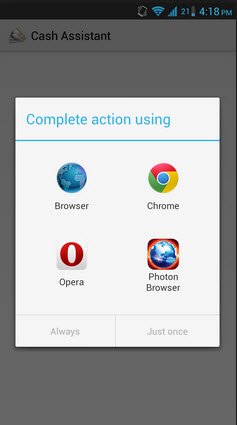
You will need to place code within your app’s manifest file, which matches a URI pattern with HTTP URIs, so a user can open the app directly from search results. Intent filters have several elements, but the following are recommended at a minimum:
- <intent-filter>
- <action>
- <data>
- BROWSABLE category
- DEFAULT category
Once you have configured your deep links, you will need to test the deep links to ensure they are working as expected. This also allows you to gauge how your defined intent filters work when actively searching. You can use Google’s deep link testing tool for this.
After you have tested your deep links, you’ll want to facilitate app URI crawl and discovery by search engines. Remember how I said URIs link to a specific location within a mobile app? Well you’ll want to ensure that Google is indexing these URIs, so when a user clicks from a search result, they are taken directly to your app. So how do you get your app URIs crawled? Try one of the following:
- ViewAction with Schema.org
- Rel=”alternate” in HTML head
- Rel=”alternate” in XML sitemap
Moz discusses this in their super useful app URI crawl and discovery post.
For more information regarding the implementation of intent filters, and the basic intent filter elements, please refer to this very useful guide at Google Developers.
5. Utilising App Actions Using Google’s Knowledge Graph
[one_half]I think we can all agree that Google’s Knowledge Graph is the bomb.com! Getting your app indexed will allow Google to potentially launch your app and complete actions within your app. This is known as app actions. App actions work by using entity detection and the knowledge graph to understand user actions. This will allow Google to further build out their Knowledge Graph using common user actions from an app.
This means that a user can enable app actions using Schema Mark-up to configure the actions which apply specifically to their app. For example, you could use the CheckAction to allow users to check flight statuses/ times within your flight tracker app. Once this has been enabled using the correct Schema Mark-up, these actions can appear not only in the knowledge graph, but also in search results.
Bonus: Optimising Your App Content Landing Pages

So as I have explained in some detail, deep linking ensures that your app content appears in search results. This is possible by implementing deep linking to specific content within your app. Now as with any good user experience you have to consider where you are sending the user. This is something I like to call ‘App Content Match’. It’s a term I came up with myself (how cool am I?). App content match simply means ensuring that you send a user to the most relevant page within your app. This will mean matching the deep link to the most relevant page. You also want the page to be optimised for certain search queries.
Let’s say you have a beauty app where you share beauty secrets, tips and tricks for women. Let’s say you have a page in your app called ‘How to remove gum from your hair’. You want to ensure that this landing page is optimised similar to a website page. You want the content to be optimised, and you want to enable deep linking, so a user can land in your app when they need to remove gum from their hair. You’ll need to consider both user experience and SEO when optimising your app landing pages. ‘Think with Google’ has a wonderful article that outlines how to optimise the user experience of your mobile app. If you want to learn how to optimise your app landing page for conversions, definitely check out this blog post by Arkenea.
We have finally reached the end! If you have stayed with me for the entirety of this article, well done! We hope you found our 5 things you need to know about app optimisation helpful! If you require any further assistance in optimising your app, please feel free to contact us. We’re always happy to help!

